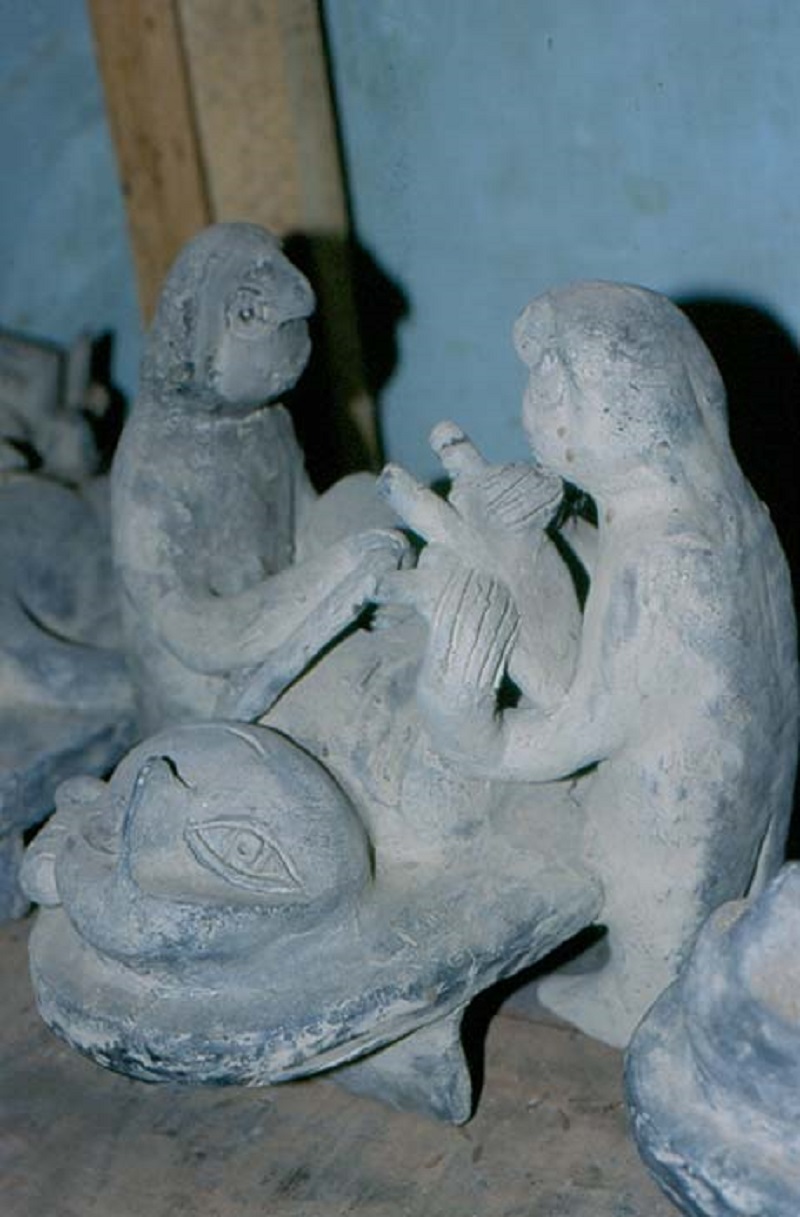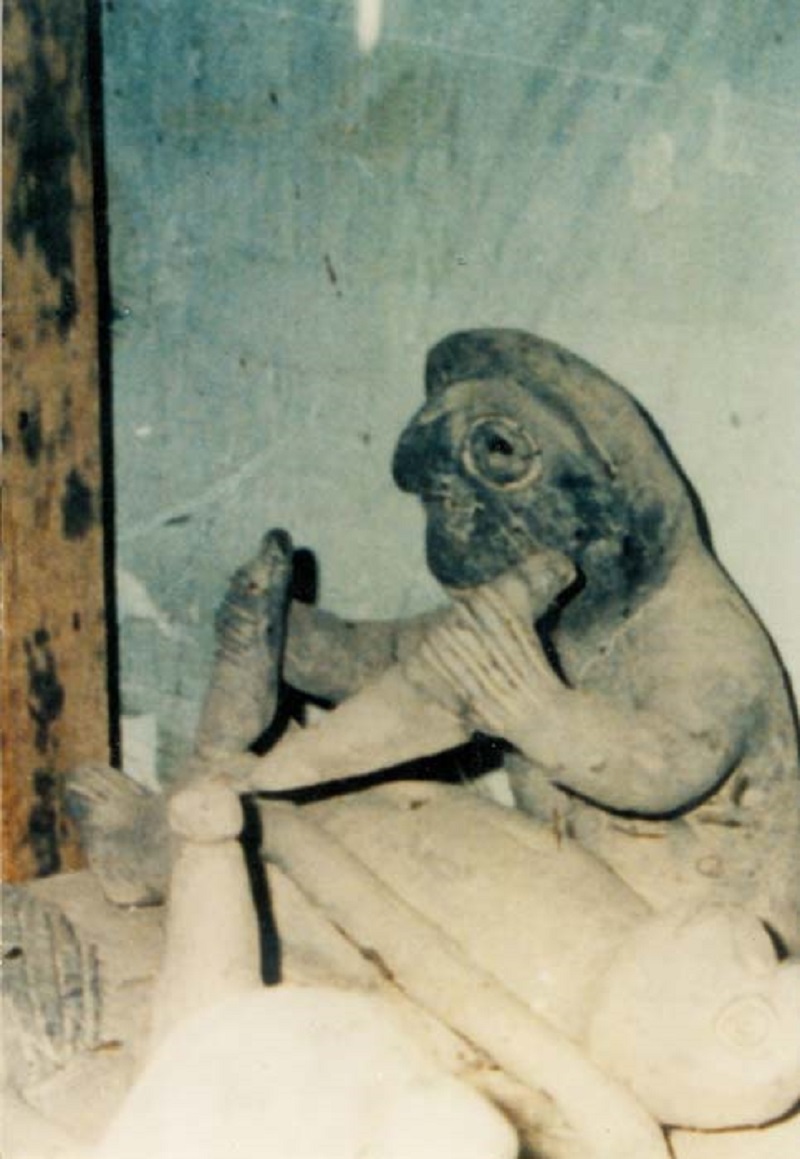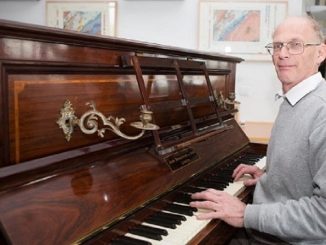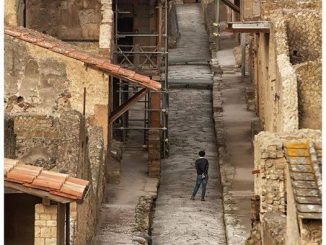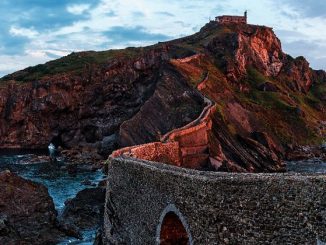In Ica, Peru, I visited the most mysterious museum on the planet. It is the Museo de Piedras Grabadas de Ica, (Museum of Ica’s Stone Carvings). Professor Javier Cabrera Darquea (1924-2001) created it. The museum offers two archaeological collections, one of which was kept secret for many years. In fact, neither should exist: they are too unrealistic. But reality is sometimes stranger than the most unbelievable fiction.
Secret rooms and shocking scenes
Cornelia Petratu and Bernard Roidinger write in the postscript to their work The Stones of Ica: “The punctual, lively and enthusiastic Professor Cabrera welcomed us at his museum. […] There was nothing in his presentation that could have surprised us. However, on the last day, he completed his act. […] And so, Professor Cabrera revealed to us the locked rooms in a house that he called his ‘secret room’. If visiting Cabrera’s private museum shocked us, what we were about to see would surpass all our imaginations. Cabrera’s ‘Secret Room’ contains things that break all boundaries of rational logic. Even if we tried to explain what we saw, we couldn’t. It is simply beyond our grasp.”
What did Cornelia Petratu and Bernard Roidinger see but couldn’t describe? What images are they not allowed to publish? Or: what did they see and didn’t dare include in their book?
I knew about the mysterious objects in the private museum of Professor Javier Cabrera Darquea as early as the 1970s. There was mention of a public part as well as a secret part of the mysterious archaeological collection, but no have specific information. The claims of scientists do not exist. What is Professor Cabrera and what are his supposed discoveries that should not exist?
Secret collection
I first attempted to view and photograph Professor Cabrera’s mysterious artifact collections in the fall of 1992. That year, three friends and I traveled across South America for two months, from Ecuador to Easter Island. When we arrived in Ica and visited Professor Cabrera’s private museum, we were bitterly disappointed. The museum was closed and there was no one to ask about it. Our bells remained unanswered. Finally, someone told us: Professor Cabrera was traveling – in Europe. It was ironic: four Europeans made the long journey to Ica in Peru to visit Professor Cabrera, while the scientist was traveling in Europe.
But then I found an opportunity to have a long conversation with one of Professor Cabrera’s brothers. He frankly confirmed the existence of a second secret collection that he was not allowed to show me without his brother’s express approval. Unfortunately, the latter is out of reach.
Years later, it finally happened.
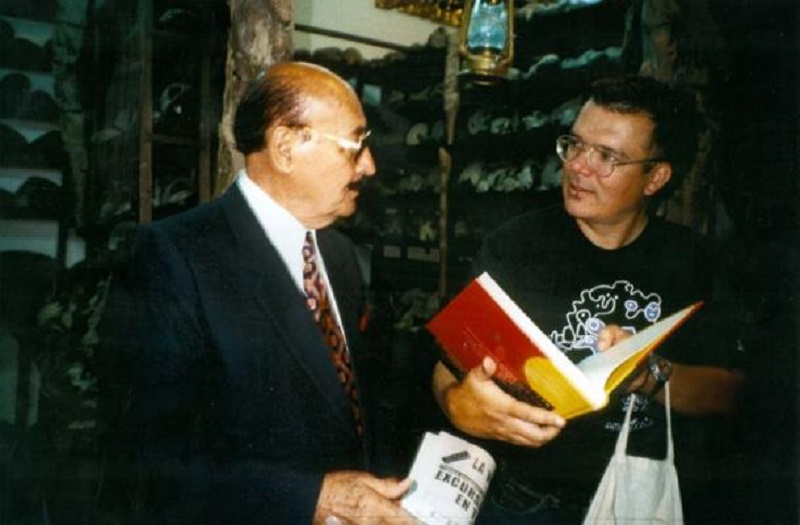
Professor Cabrera (left) with Walter-Jörg Langbein (Photo by Ingeborg Diekmann)
My eyes gradually got used to the dim light. The air is full of dust. Ahead of me stretched a narrow corridor, the other end of which I could only guess. To my right and left there were shelves that reached the ceiling above me. Hundreds, no, thousands of small clay statues lay side by side, crowded together, several rows deep. Apparently, over time, new shelves were gradually added, to create more space for the mysterious items that steadily accumulated. The huge collection is constantly growing.
Hundreds of strange sculptures in a once secret collection. (© Walter Langbein)
Horror collection
Several bare light bulbs were tied to electrical wires and suspended from the ceiling. Their pale light emitted a strange glow that enveloped the entire scene.
The air was dry and made me cough. I slowly walked through the shelves. The cone of light created by my powerful torch passed over the figurines on the shelf. Most consist of two humanoid figures representing a grotesque grouping: one figure lies on a kind of table, and the second stands beside it, ‘treating’ the person in a prostrate position. Transformations of this group include a standing figure in the process of being cut open or cut into a lying figure. In most cases, the ‘surgeon’ opened the ‘patient’.

Strange human figures. (© Walter Langbein)
A whole army of identical actors began their bloody business. One hundred—no, one thousand—surgeries or autopsies are being performed. The knife-wielding figures do not resemble compassionate doctors trying to help the sick; no, they give the impression of being emotionless scientists, abusing humans like guinea pigs and dissecting them with the curiosity of researchers. Are ‘surgeons’ human? Their characteristics seem quite strange and strange.
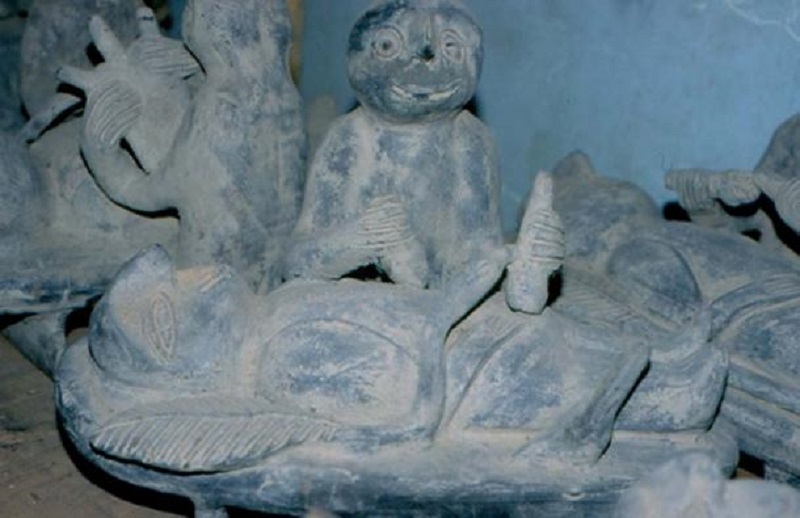
Humanoids testing medical procedures? (© Walter Langbein)
Or perform surgery? (© Walter Langbein)
I have seen hundreds, even thousands of such creatures in Professor Cabrera’s secret corridor. They stood tightly packed, next to each other. I would have had the necessary weeks to photograph each individual piece. Inside the dusty cardboard boxes, I discovered badly damaged figurines and unidentified fragments. Professor Cabrera: “I can only display a small part of the intact statues in the collection. I lack the time needed to put the broken pieces back together!”
The scientist repeatedly assured me that thousands of such figurines were stored in the cave. The lack of space prevented him from displaying more than a small portion of his collection in a secret part of the museum. Professor Cabrera estimates that indigenous people have unearthed about 50,000 archaeological artifacts. He asserted again and again that he had seen about a hundred thousand such mysterious objects in ‘underground tunnels’. “To preserve these treasures for posterity, they need to be kept in a large museum. Precious artifacts must be professionally preserved, cleaned, classified and displayed under ideal conditions (temperature, humidity).”
Professor Javier Cabrera Darquea is famous around the world for his exceptional archaeological collection. In 1974 Robert Charroux reported in his book L’enigme des Andes about Professor Cabrera’s museum. The English translation was published in 1977 and was titled Mysteries of the Andes. There is no mention of the real sensation—Cabrera’s Cabinet of horrors. The professor explained: “The time is not right!” Will members of modern science ever address and explain the archaeological artifacts in Cabrera’s collection? “They have to!” Professor Cabrera said. I have my doubts.
Ancient surgery?
According to Cabrera, the artifacts in his museum are “thousands of years old”. If they were true, many parts of human history would have to be completely rewritten. There is currently no allowance in the annals of human evolution for the doctors who performed surgery in ‘old Peru’ thousands of years ago. Can we read the mysterious, monstrous figurines as if they were a book?
Figures in secret collection. (© Walter Langbein)
Professor Cabrera firmly believes that. Perhaps the clay figurines depict human sacrifice? Did priests offer human sacrifice thousands of years ago? Professor Cabrera strongly opposes that hypothesis. He was a direct descendant of the founder of the town of Ica, Captain Don Gerónimo Luis de Cabrera y Toledo, and was a respected and famous physician. “Look closer!” he replied almost harshly. “What do you see there?” And in fact, in one image, someone’s heart appears to have been cut out of their chest. “A human sacrifice?” I wonder. Another clay sculpture depicts a human heart undergoing medical treatment. A creature held it in its hand; something that looks like a tube leading from a vein to a blood vessel.
